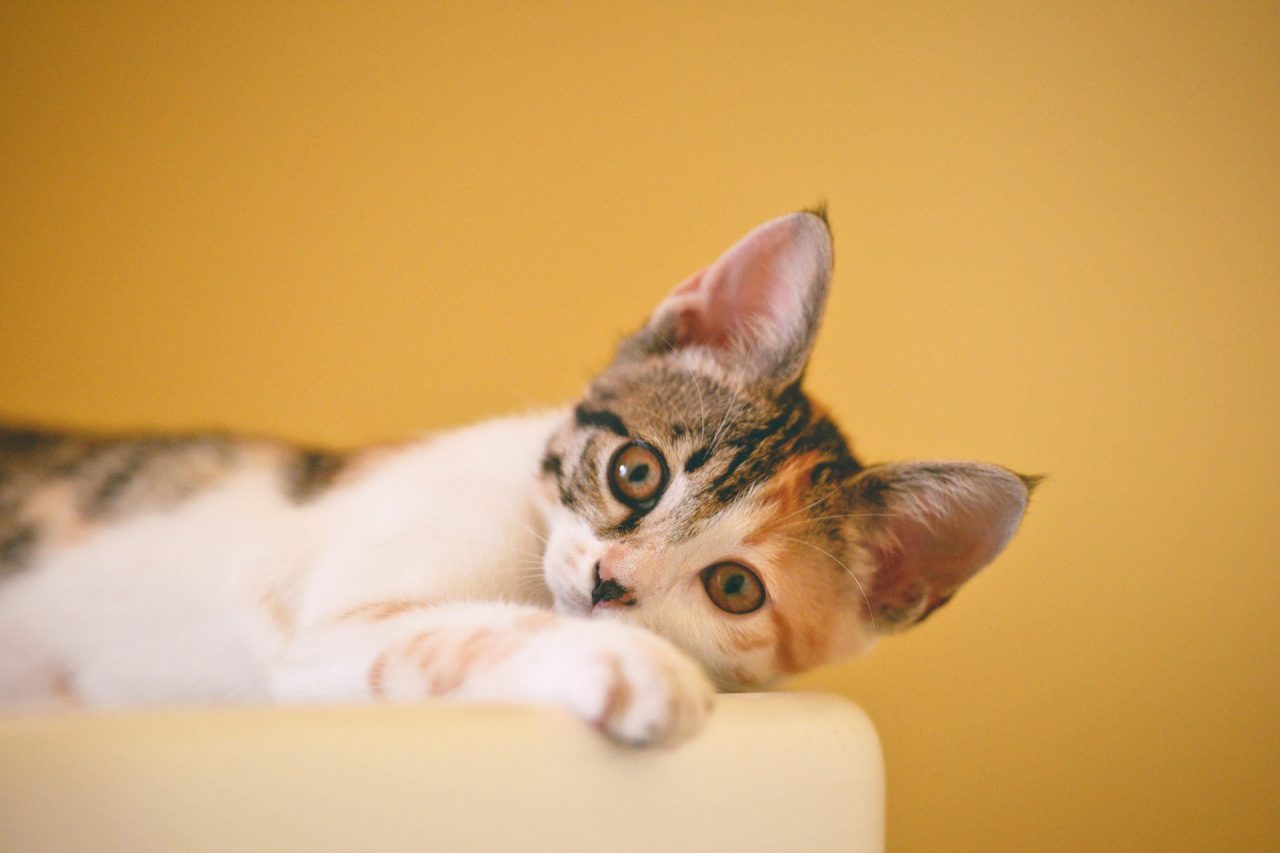Table Of Content

Testing can also be performed to identify which environmental allergens cause your cat's allergies. The results of this test allow your veterinarian to prescribe "allergy shots" (called allergen-specific immunotherapy) to potentially help reduce your cat's allergic reaction. Allergies are a longterm condition that usually requires life-long management. Food allergies can also produce intense itching and oozing sores, especially around the head, face, ears, and neck. Affected cats quickly begin to lose hair, and chronic ear infections contribute to the problem.
Flea Bites

With this age-related hair loss, we expect it to be symmetrical and not patchy. Your cat shouldn’t be itchy when hair loss is a normal part of its aging process. Cat hair loss on ears can also be caused by fungal infection; a ringworm, to be more precise. This kind of skin problem in felines can be treated with various means against fleas, such as collars, sprays, powders, or drops. Of course, you first need to consult your vet on the best kind of medication for your kitten. Bald spots are caused by inflammation of the skin and hair follicles.
Will my cat’s hair grow back?
The treatment involves oral medication, and applying medication to your cat’s skin. Kittens and older cats are at a higher risk for ringworm infection, as well as outdoor cats. If you suspect this fungal infection in your cat, you need to consult a veterinarian.
Solar Dermatitis
The ears and top of your cat's head are the most vulnerable places for tick bites, so hair loss around the ears from fleas is not uncommon. Fleas can usually be identified by their physical appearance or potentially from the droppings they leave behind. In any case, hair loss should be investigated to ensure that the reasons behind the bald spots are not overly abnormal or dangerous.
While also not necessarily abnormal, Acquired hair loss may have some causes that may be potentially concerning. Usually acquired loss comes from irritants in the environment leading to a cat itching, scratching, biting, and doing anything they can to scratch that bothersome itch! Still, it’s a possible cause of hair loss around the ears, head, and face. What causes this inflammatory disease is still unknown, and there’s no cure, but you and your vet can help manage the symptoms by providing anti-inflammatory medications. Since it’s normal, there’s no treatment unless you catch other signs of a serious skin condition that can cause hair loss. Your vet can quickly diagnose ear mites with their otoscope and provide treatments accordingly.
Ask the Vet: My Cat Is Going Bald! - The Saturday Evening Post
Ask the Vet: My Cat Is Going Bald!.
Posted: Thu, 18 Mar 2021 07:00:00 GMT [source]
Most common causes of feline hair loss on ears

Ticks can cause irritation at the site of attachment and may be found on the pinna or in the ear canal. Signs include head shaking, head rubbing, or attempts to scratch the ear. Both the animal and the environment (including all bedding) should be treated using the compounds prescribed or recommended by your veterinarian. Secondary bacterial or yeast infections also occur commonly and need to be treated.
Cat Thin Hair In Front of Ears: Is It Normal?
Speak to your doctor if any family members have developed skin changes or are taking immunosuppressants. The information is current and up-to-date in accordance with the latest veterinarian research. The most prominent symptom of this disease is scaling of the skin, which is usually not accompanied by itchiness. Considering that all of these skin problems are very uncomfortable for your cat, it is important that you take it to the vet as it will not go away on its own. Unfortunately, there is always a possibility of your cat becoming a host to fleas. They can be observed with the naked eye when combing your cat with a flea comb.
Rescue Cat Makes Remarkable Recovery After Fire Leaves Feline Covered in Severe Burns - PEOPLE
Rescue Cat Makes Remarkable Recovery After Fire Leaves Feline Covered in Severe Burns.
Posted: Wed, 26 Jul 2023 07:00:00 GMT [source]
Mange
Visit your vet for a regular checkup even if you don’t notice anything unusual, just in case. Therefore, the area in front of their ears is also heat and touch-sensitive. Although experts don’t completely understand this condition, they suspect it’s auto-immune related. That way, your cat will have something else to focus on besides grooming.
These mites are easily transferred to other cats and will sometimes even transfer to people, although they typically cannot survive on humans. Atopy refers to an allergic reaction to a contact or inhaled allergen such as pollen or dust that often leads to intense itching around the head, ears, and neck. In an average cat, these substances wouldn’t cause skin issues; in cats with an allergy, they can cause discomfort and severe itchiness. This article goes in-depth into common household allergens for cats. Cat ear mites, or Otodectes cynotis, can also cause severe itching and subsequent hair loss around the ears.
It’s important to minimize exposure and contact of the cat with other animals and people in the household and to discuss hygiene and environmental cleaning with your vet. It’s important to use gloves, wash your hands, and sanitize surfaces, as the spores from the environment may cause further spread of the fungus. On the other hand, this is something that can also be caused by mites, fleas, yeast, ringworm, and diseases such as hyperthyroidism, dermatitis, or hormonal imbalance. If your cat is suffering from acquired hair loss, there are some steps you can take to prevent it from happening. This can save your cat (and you) from the discomfort of dealing with and treating these conditions.
According to petMD, breeds prone to hereditary hair loss are Devon Rex, Siamese, Burmese, and Birman cats. Hair loss in cats, officially known as alopecia, is a fairly common occurrence. The range of how much hair is lost and on what parts of a feline’s body can vary widely, however, and this largely depends on the exact root cause of the hair loss. This can range from slight thinning to large bald spots, and it is naturally alarming for a cat lover to notice this on their feline.
Food allergies are far less common in cats than in dogs, and they usually do not cause the same severe skin issues often seen in dogs. Not all cats with food allergies will have gastrointestinal symptoms. If they have gastrointestinal and skin symptoms, this should increase the suspicion of a food allergy. There are also calming food options on the market by brands such as Royal Canin or Science Diet that might help.
Fungus is a group of microorganisms that includes yeasts, molds and mushrooms. Fungal infections can cause intense itching and this can lead to scabs, sores, lesions and, in turn, loss of hair. Bacteria can be the cause of your pet losing hair on its ears.
This inflammation, called contact dermatitis, can develop 1 to 7 days after starting a treatment. The skin of the ear can become red and swollen and have bumps or sores. Veterinarians typically treat the condition by stopping all ointments or other topical medications.


No comments:
Post a Comment